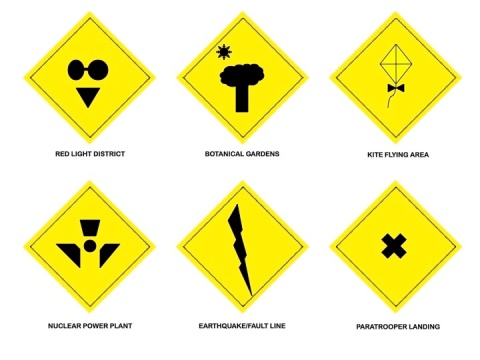Archive for May 2009
Week 12 Question One-Summary
Posted on: May 31, 2009
“Performance load is the degree of mental and physical activity required to achieve a goal” (Lidwell et al., 2003). There are two types of loads which make up performance load, namely cognitive load and kinematic load.
Cognitive load refers to the amount of mental activity-“perception, memory and problem solving”-required to acheive a goal. For example, the evolution of computers saw the reduction in cognitive load with the advent of the graphical user interface. General strategies to reduce cognitive load include, “minimizing visual noise, chunking information, utilizing memory aids and automating computation-and memory intensive tasks” (Lidwell, et al., 2003) Clark also suggests omitting tangential stories and visuals to assist cognitive load in leaarning cenvironments (2008, p) .
Kinematic load refers to “the degree of physical activity-number of steps or movements, or amount of force required to achieve a goal” (Lidwell, et al., 2003). For example Samuel Morse designed Morse code to reduce kinematic load. “General strategies for reducing kinematic load include reducing the number of steps required to complete tasks, minimizing the range of motion and travel distances,and automating repetative tasks.” (Lidwell, et al., 2003)
Technology has allowed us to perform everyday tasks more easily, quickly and simply .
References
Lidwell, W., Holden, K., & Butler, J. (2003). Performance Load. In Universal Principles of Design Massachusetts: Rockport pp. 148-149
Clark., R.C. (2008) Building Expertise: Cognitive Methods for Training and Performance Improvement San Fransisco, CA, USA p.97
Week 12 Question three
Posted on: May 31, 2009
Week 12 Learning Portfolio Item One
Question 3
Pyschology is necessary in visual design as designer can design visual material that people can easily understand and access. For example the use of colour to convey shared cultural meanings, for example the colour orange in Western society means courage. Designers can also utilize the Golden Rectangle to create asthetically pleasing visual design elements.
Chunking is also assists visual designers create visual material which is easy for the target audience to digest. (Clark, 2008, p.74) In understanding the way target audience think as well as understand visual design, designers can create visual material that is aesthetically pleasing and is easy to digest.
References
Clark., R.C. (2008) Building Expertise: Cognitive Methods for Training and Performance Improvement San Fransisco, CA, USA p.97
Week 12 Learning Portfolio Item
Question 2- Chunking Information
According to the principle of chunking, information should be presented in small digestible units. A ” digestible unit ” consists of no more than nine points of information. (Horn, 2009) This is based upon research which suggests that humans can understand and remeber seven plus or minus two points of information. However 21st century Cognitive Load Theory suggests that short term memory can process in the sense of contrast, combine and manipulate no more than two to four elements. (Clark, 2008, p.74) Chunking information means the reader or audience can easily access and comprehend the information presented. We live in an information rich world and require techniques such as chunking to condense information into easily digestible sections.
The term chunking was first termed by Herbert Simon who used the word chunk to describe long-term memory structures that can be used as units of perception and meaning. Chunking is a learning strategy designed to obtain these units of perception and meaning. (San Diego County Office of Education) Chunking is used to condense large amounts of information to more digestible sections.
The technique of chunking can be applied to any document, powerpoint presentation, design and visual communication. For example there is a rule of no more than three to nine bullet points on a powerpoint slide at any one time. This reduces cognitive load and allows the audience to easily read the information on the slide.
References
Horn, R.E. (2009) Developing, Procedures, Policies and Documentation, Information Mapping Inc Workshop
Clark., R.C. (2008) Building Expertise: Cognitive Methods for Training and Performance Improvement San Fransisco, CA, USA p.97
Chunking Information, San Diego County Office of Education, n.d. http://kms.sdcoe.net/differ/21-DSY/53-DSY.html Retrieved 31st May 2009.

Roadsign Activity Slide 1 of week 6 of CMM1108 Communications and Digital Technology

- Roadsign Activity
- Slide 2 of week 6 of CMM1108 Communications and Digital Technology

- Caricature- week three activity of CMM1108 Communications and Digital Technology

Cars reduce kinematic load by reducing the energy expended in traveling from one destination to another.

Universal Product Codes reduce performance load associated with consumer transactions, as price tags are no longer required, cashier handling is reduced and inventory is automatically updated

Remote keyless entry dramatically reduces kinematic load by enabling people to lock and unlock all doors at the press of a button.
Self evaluation Table
Posted on: May 2, 2009
| Mark | Comments |
1 |
2 |
3 |
4 |
5 |
| Quality of the product & submission | The quality is ok but could have added more content to the about page blog and the learning portfolio blog. | x | ||||
| Depth of information & discussion | Learning portfolio blog could have been discussed in more depth and the wordpress.com tips could have been discussed in more depth. | x | ||||
| Quality of the conceptual underpinnings | I may have covered the concepts but could have discussed in more depth | x | ||||
| Quality of referencing | I referenced as per the referencing guide | x |
Tips on WordPress.com
Posted on: May 2, 2009
Tips on WordPress.com:
Tip One:
Before publishing a post you may like to save a draft copy of you post so that you may edit and add to your post.
Tip Two:
You may like to add links to your weblog site. Simply go to Links, Add new and type in the name of the website, address and Description.
Learning Portfolios
Posted on: May 2, 2009
“Portfolios are traditionally viewed as a personal collection of information and artifacts that describe and document a person’s learning and acheivements.” (Fitch et al., 2008 p.1) A learning portfolio is a collection of one’s work often amounting to a documentation for a personal resume. A learning portfolio fulfills two major functions: Assessment and demonstration of accomplishments.
Learning portfolios for assessment provides a body of work that can be used to assess the quality of a students performance and provides direct evidence of the quality of a students body of work. Learning portfolio demonstrate the students ability to monitor all major topics of the course or program. They also provide evidence on how work on an assignment evolved. Learning portfolios have many purposes including “monitoring student progress (and) showing off what has been accomplished” (Borich, 2007, p.430)
What does one include in a learning portfolio? Well one includes all the learning activities as well as reflections on those learning activities to demonstrate their understanding of the topics covered.
The benefits of a learning portfolio are numerous. Not only do they “facilitate and assess individual learning” (Fitch et al, 2008, p.37) but they also help students become more self directed learners and gauge how effectively students meet the institutions learning outcomes. End of year results of one study conducted in schools indicated there was a significant increase in student understanding and learning and they were more motivated to learn. (Wai-fu Kan, 2007, p.1) Learning portfolios are beneficial for students, teachers and institutions as they show how effectively these three elements contributed to student learning.
References
Books:
Borich, G.D. (2007). Effective teaching methods research-based practice. (6th ed.) New Jersey, USA: Pearson Merrill Prentice Hall.
Journal Articles:
Fitch, D., Peet, M., Reed, B.G., & Tolman, R. (2008). The use of ePortfolios in evaluating the curriculum and student learning. A Journal of Social Work Education 44.3 (18), 37
Wai-fu Kan, M. (2007). Effectiveness of PE portfolio for enhancing students learning (PEDAGOGY)(physical education) Research Quarterly for Exercise and Sport 78.1 (1), A-62